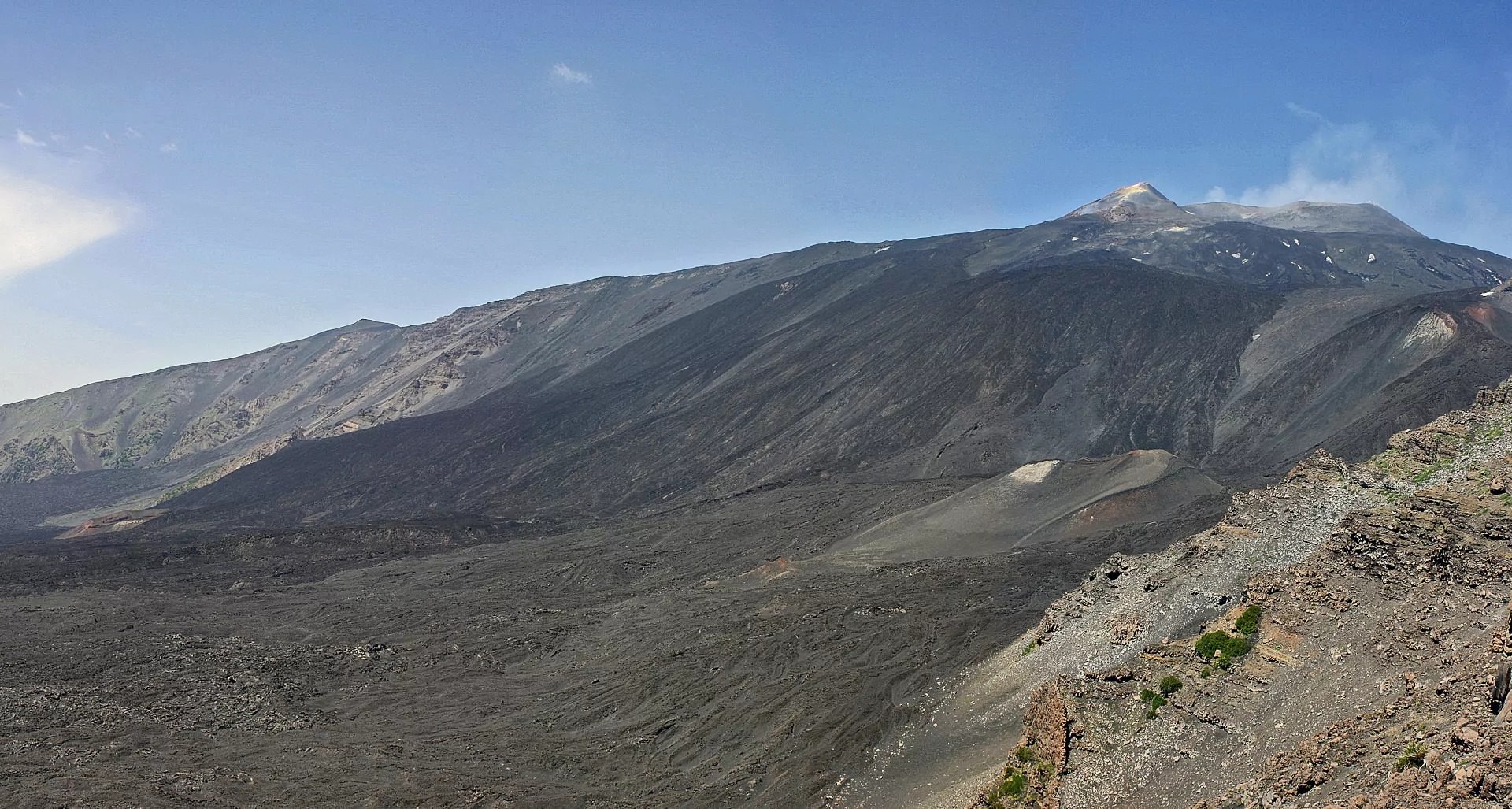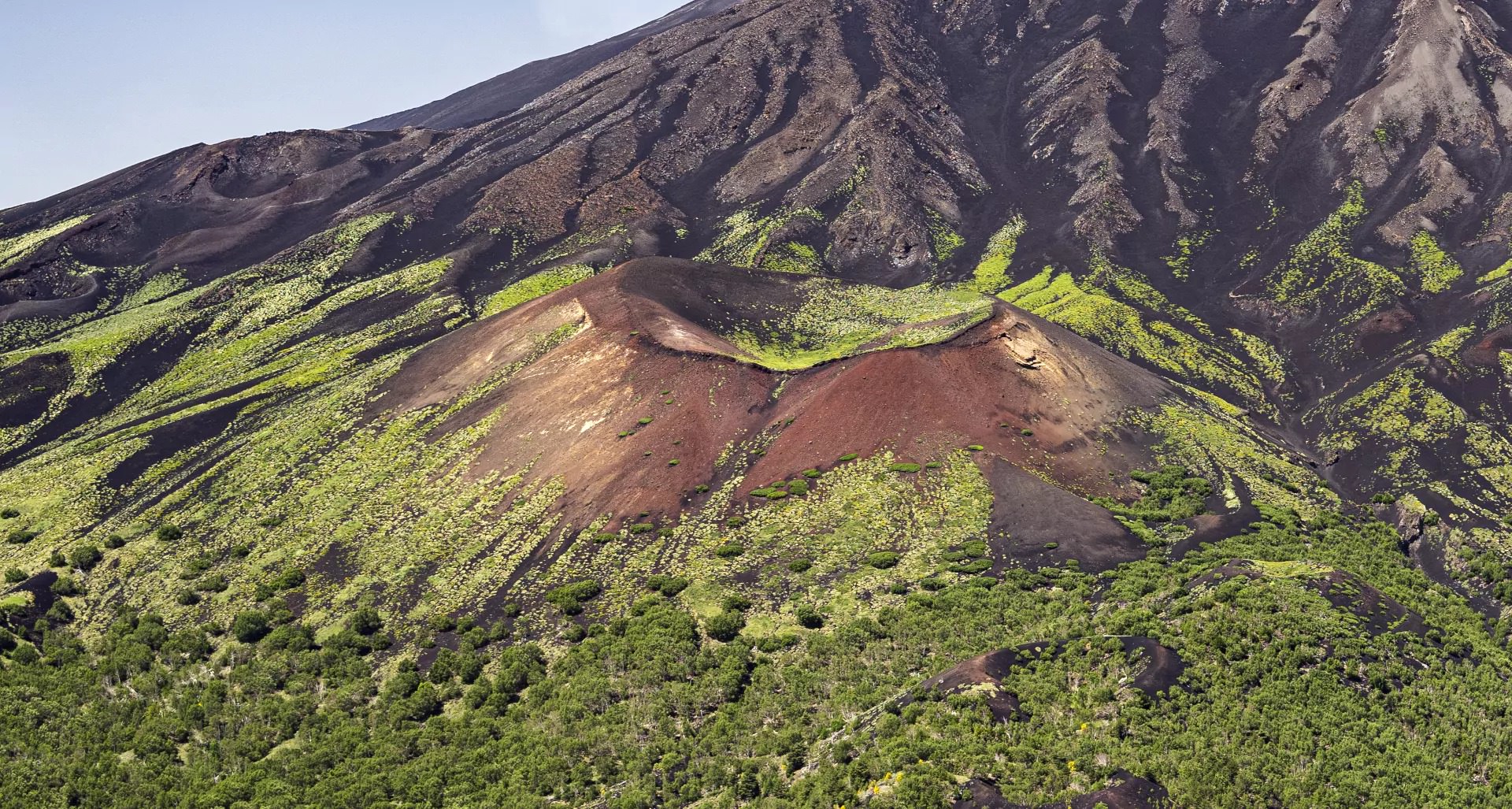Etna Trekking Tour
A challenging hike above the clouds to the rim of the valley “Valle del Bove” at 2300 m altitude, from where we enjoy a breathtaking panorama. We experience:
- View directly onto the summit craters
- Huge valley Valle del Bove
- Serracozzo Grotto
- Enchanting birch forest
9 am - 15 pm
difficult
2300m
max. 10 persons
Etna Trekking Tour
- Meeting point at Etna
- incl. breakfast
- incl. equipment
* Children under 13 years pay 10€ less!
Children under 3 years free of charge!
Etna Trekking Tour incl. transfer
- Pick-up & return transport in the Catania / Taormina area
- incl. breakfast
- incl. equipment
* Children under 13 years pay 10€ less!
Children under 3 years free of charge!
Highlights
Varied ascent
The meeting point is at the Rifugio Citelli, located in an old, extinct crater. We begin the climb through a forest of Etna birch trees, an endemic species found nowhere else.
The trail climbs steadily over ancient lava flows until we leave the tree line behind us.
Serracozzo Grotto
190 lava tunnels are scattered across Mount Etna. During our ascent, we visit one of the most beautiful: the Serracozzo Grotto, formed during the 1971 eruption.
Inside we discover beautiful formations similar to stalactites, called “dog’s teeth”.
Majestic summit craters
Arriving at the edge of the Valle del Bove valley, we look directly at the summit craters:
The Northeast Crater was the highest point of Etna for 50 years until it was overtaken by the Southeast Crater in 2021.
The south-eastern crater, currently about 3350 metres high, was only formed in 1971 and has become Etna’s highest point in just 50 years.
View over the Valle del Bove
We walk along the edge of the Valle del Bove, looking out over this huge semicircular valley on the eastern side of Mount Etna. 37km2 lie before us, covered with lava flows that have completely covered the once lush, green valley over the last 50 years.
From here you can marvel at the shape Etna had until about 9500 years ago.
Lateral craters
The descent is through the soft lava sand, on which you can run down as if on snow.
We visit the craters of the 1928 eruption, the last eruption of Etna that destroyed a town, Mascali. And we admire the largest lateral crater: Monte Frumento delle Concazze.
Important information about the tour
|
|
MEETING POINT
|
|
|
RECOMMENDED EQUIPMENT
|
|
|
SERVICES INCLUDED
|
|
|
SERVICES NOT INCLUDED
|
|
|
SERVICES ON REQUEST
|
|
|
IMPORTANT MESSAGES
|





